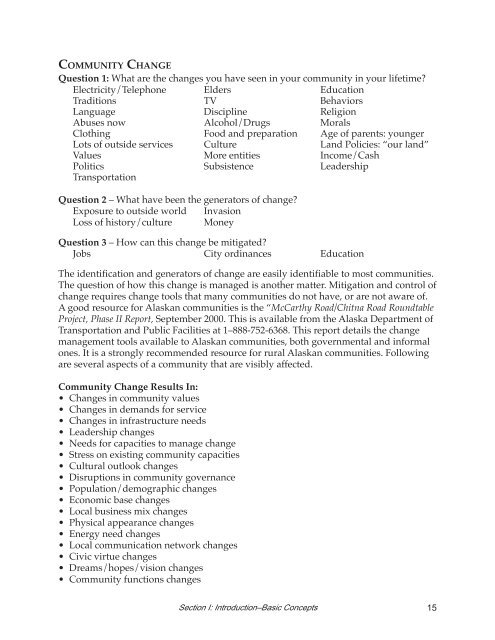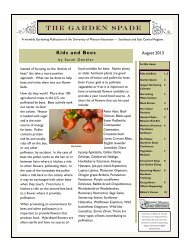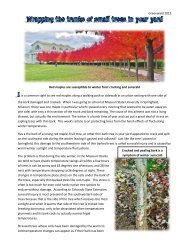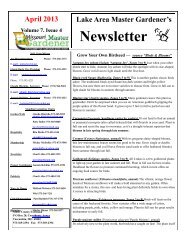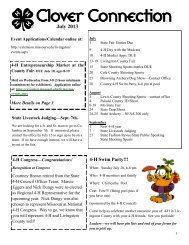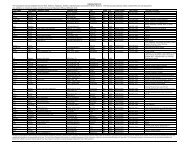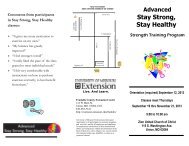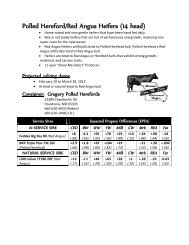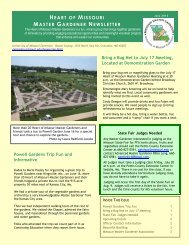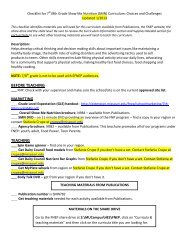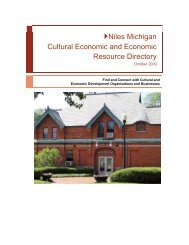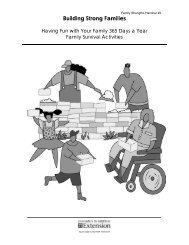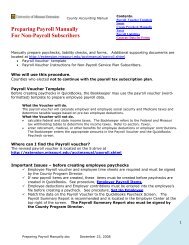Creating a Healthy Community - University of Missouri Extension
Creating a Healthy Community - University of Missouri Extension
Creating a Healthy Community - University of Missouri Extension
Create successful ePaper yourself
Turn your PDF publications into a flip-book with our unique Google optimized e-Paper software.
COMMUNITY CHANGE<br />
Question 1: What are the changes you have seen in your community in your lifetime?<br />
Electricity/Telephone Elders Education<br />
Traditions TV Behaviors<br />
Language Discipline Religion<br />
Abuses now Alcohol/Drugs Morals<br />
Clothing Food and preparation Age <strong>of</strong> parents: younger<br />
Lots <strong>of</strong> outside services Culture Land Policies: “our land”<br />
Values More entities Income/Cash<br />
Politics Subsistence Leadership<br />
Transportation<br />
Question 2 – What have been the generators <strong>of</strong> change?<br />
Exposure to outside world Invasion<br />
Loss <strong>of</strong> history/culture Money<br />
Question 3 – How can this change be mitigated?<br />
Jobs City ordinances Education<br />
The identification and generators <strong>of</strong> change are easily identifiable to most communities.<br />
The question <strong>of</strong> how this change is managed is another matter. Mitigation and control <strong>of</strong><br />
change requires change tools that many communities do not have, or are not aware <strong>of</strong>.<br />
A good resource for Alaskan communities is the “McCarthy Road/Chitna Road Roundtable<br />
Project, Phase II Report, September 2000. This is available from the Alaska Department <strong>of</strong><br />
Transportation and Public Facilities at 1–888-752-6368. This report details the change<br />
management tools available to Alaskan communities, both governmental and informal<br />
ones. It is a strongly recommended resource for rural Alaskan communities. Following<br />
are several aspects <strong>of</strong> a community that are visibly affected.<br />
<strong>Community</strong> Change Results In:<br />
• Changes in community values<br />
• Changes in demands for service<br />
• Changes in infrastructure needs<br />
• Leadership changes<br />
• Needs for capacities to manage change<br />
• Stress on existing community capacities<br />
• Cultural outlook changes<br />
• Disruptions in community governance<br />
• Population/demographic changes<br />
• Economic base changes<br />
• Local business mix changes<br />
• Physical appearance changes<br />
• Energy need changes<br />
• Local communication network changes<br />
• Civic virtue changes<br />
• Dreams/hopes/vision changes<br />
• <strong>Community</strong> functions changes<br />
Section I: Introduction–Basic Concepts<br />
15


